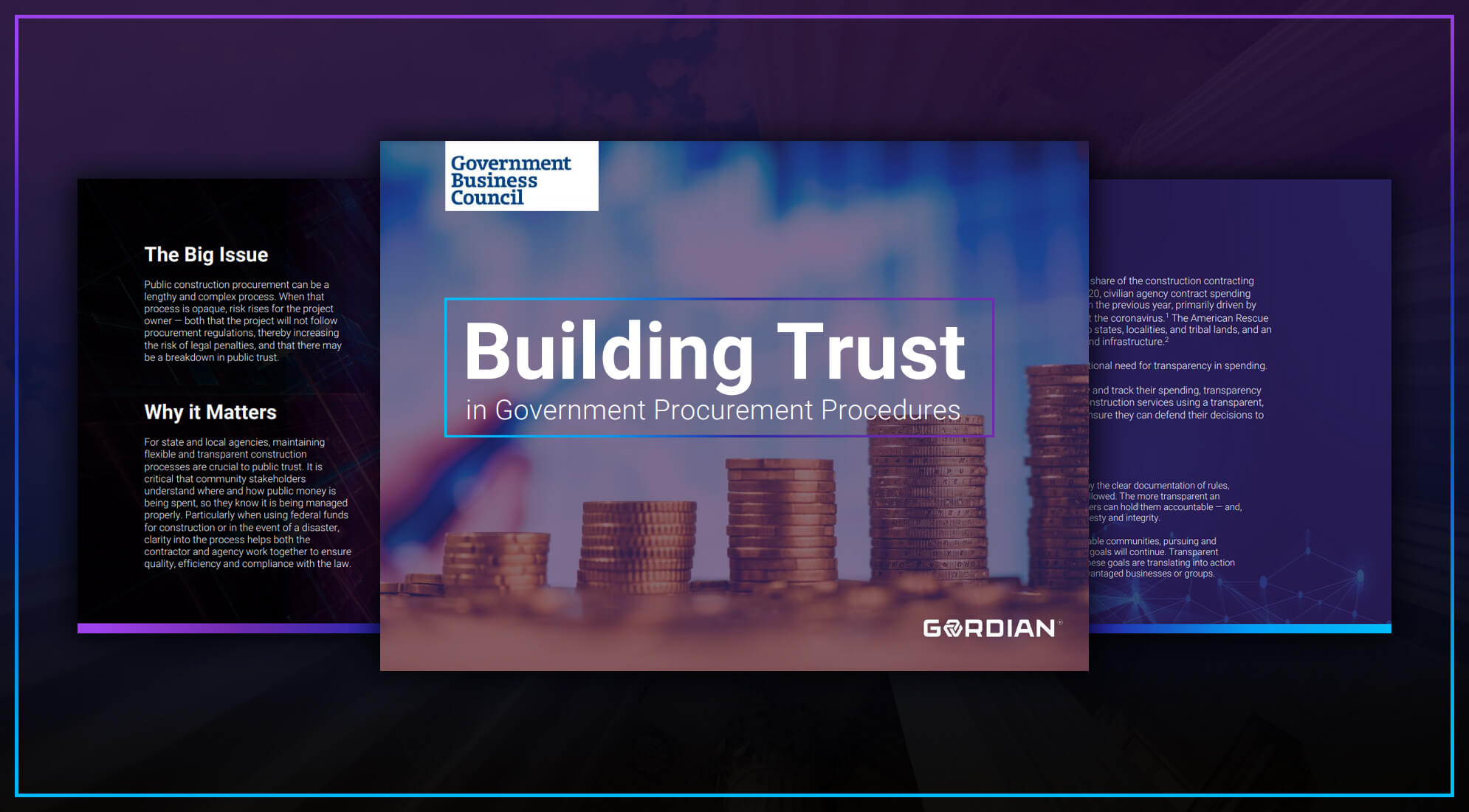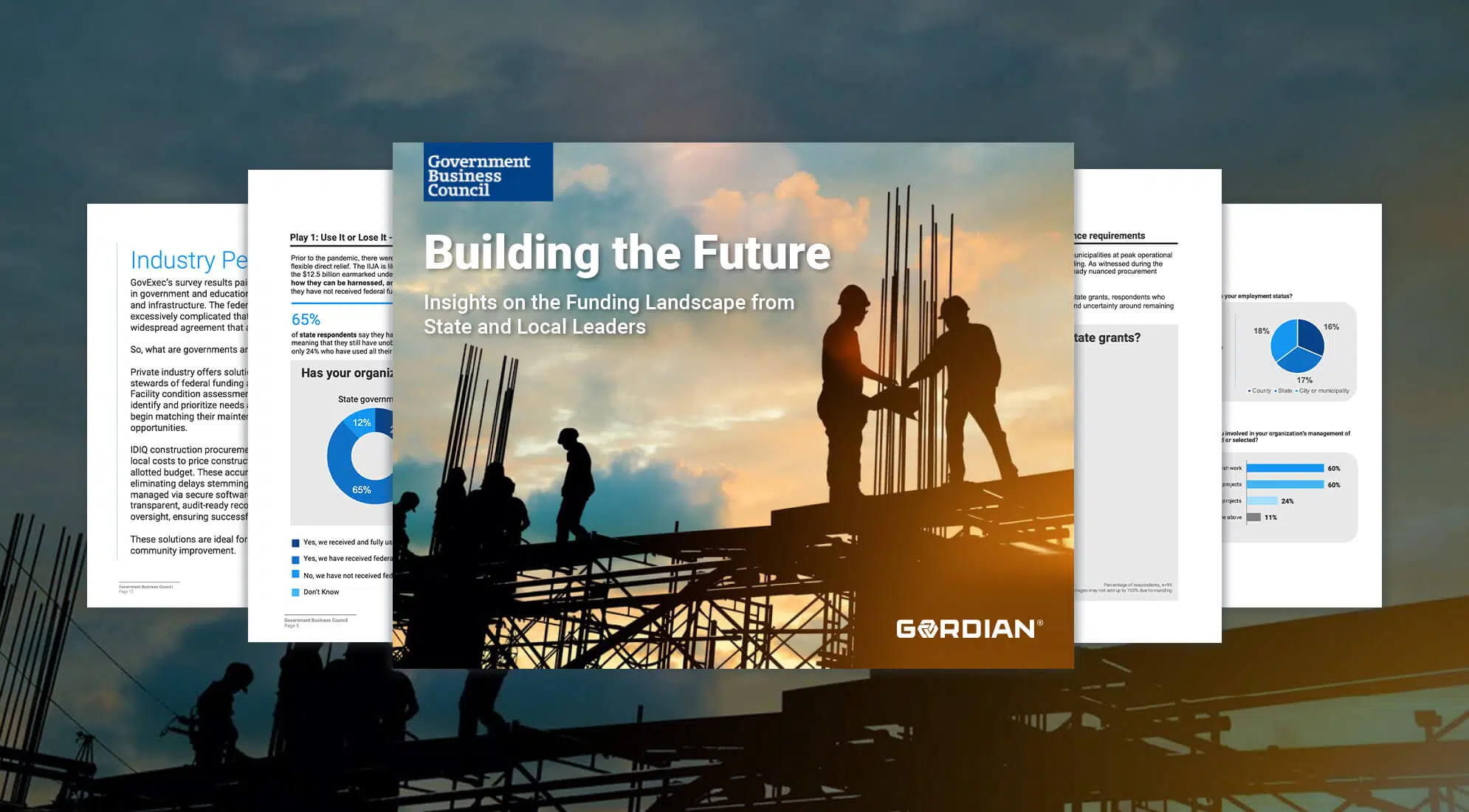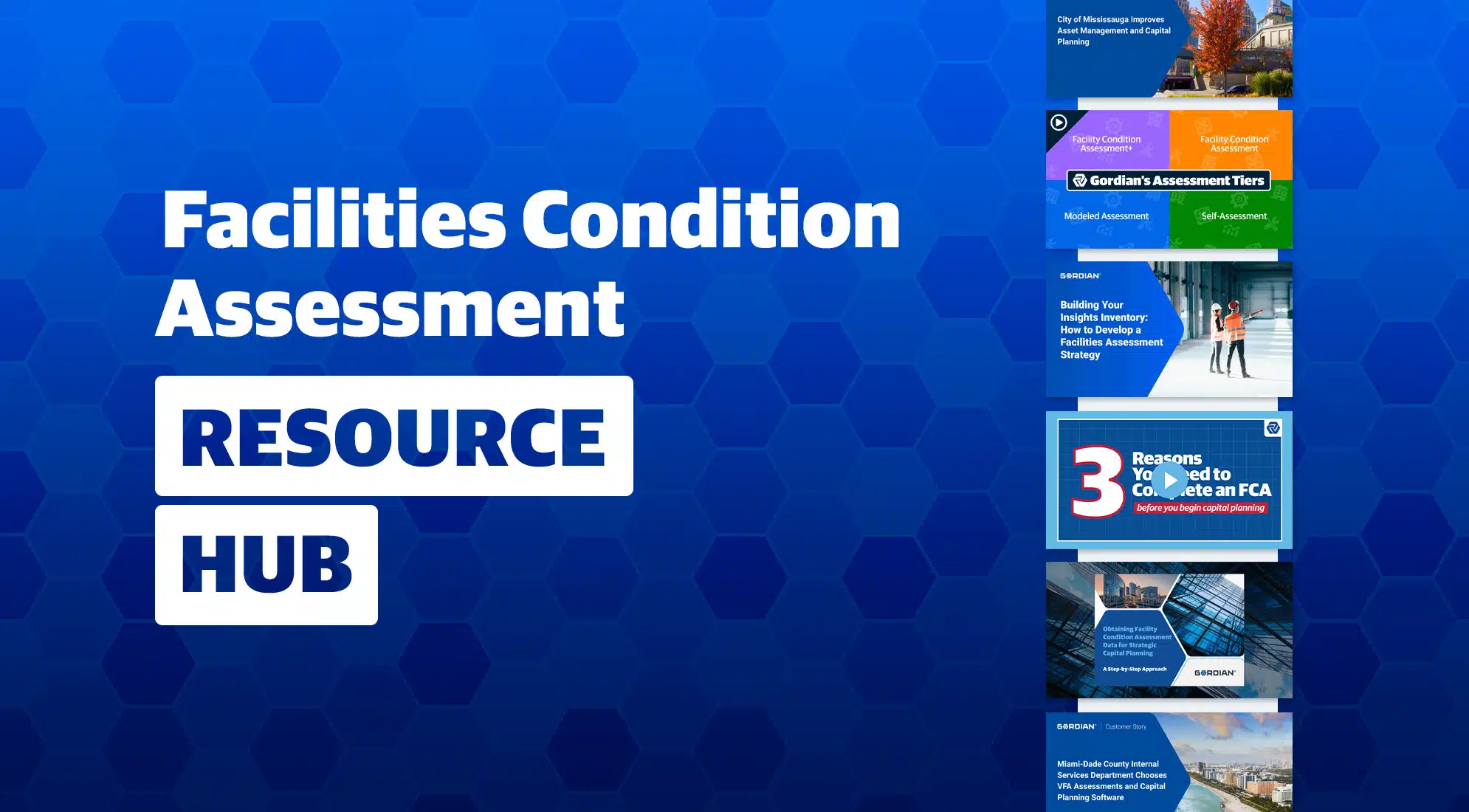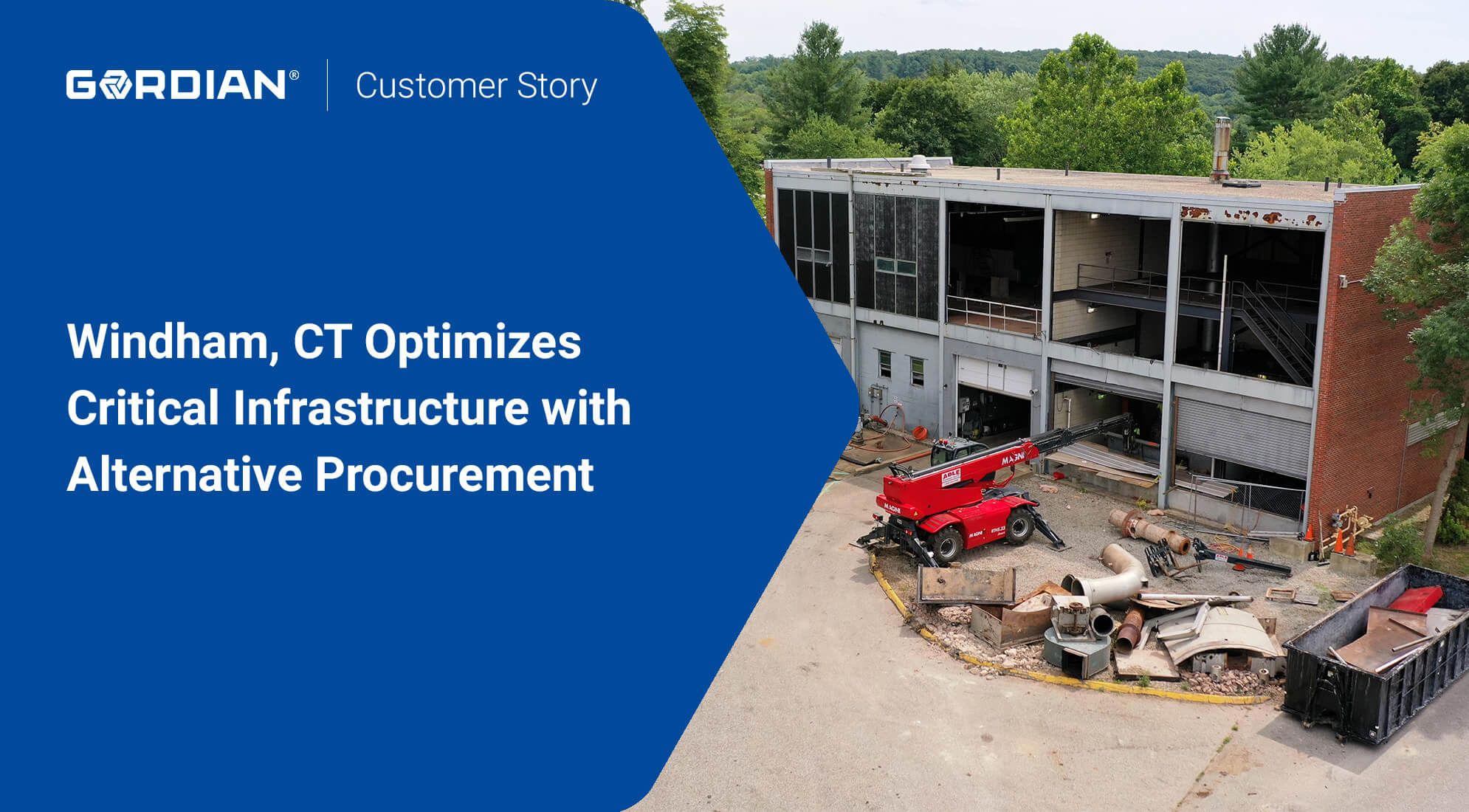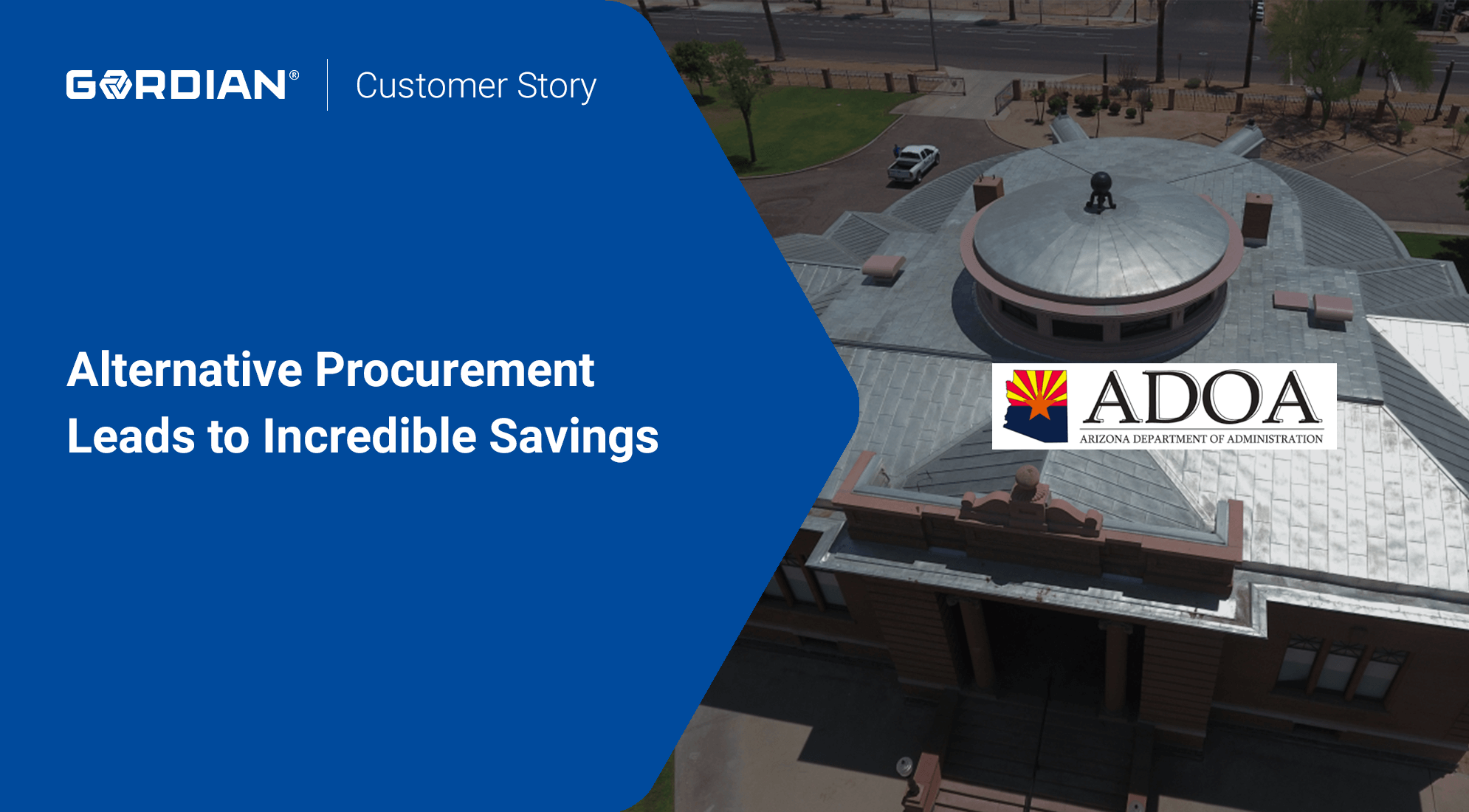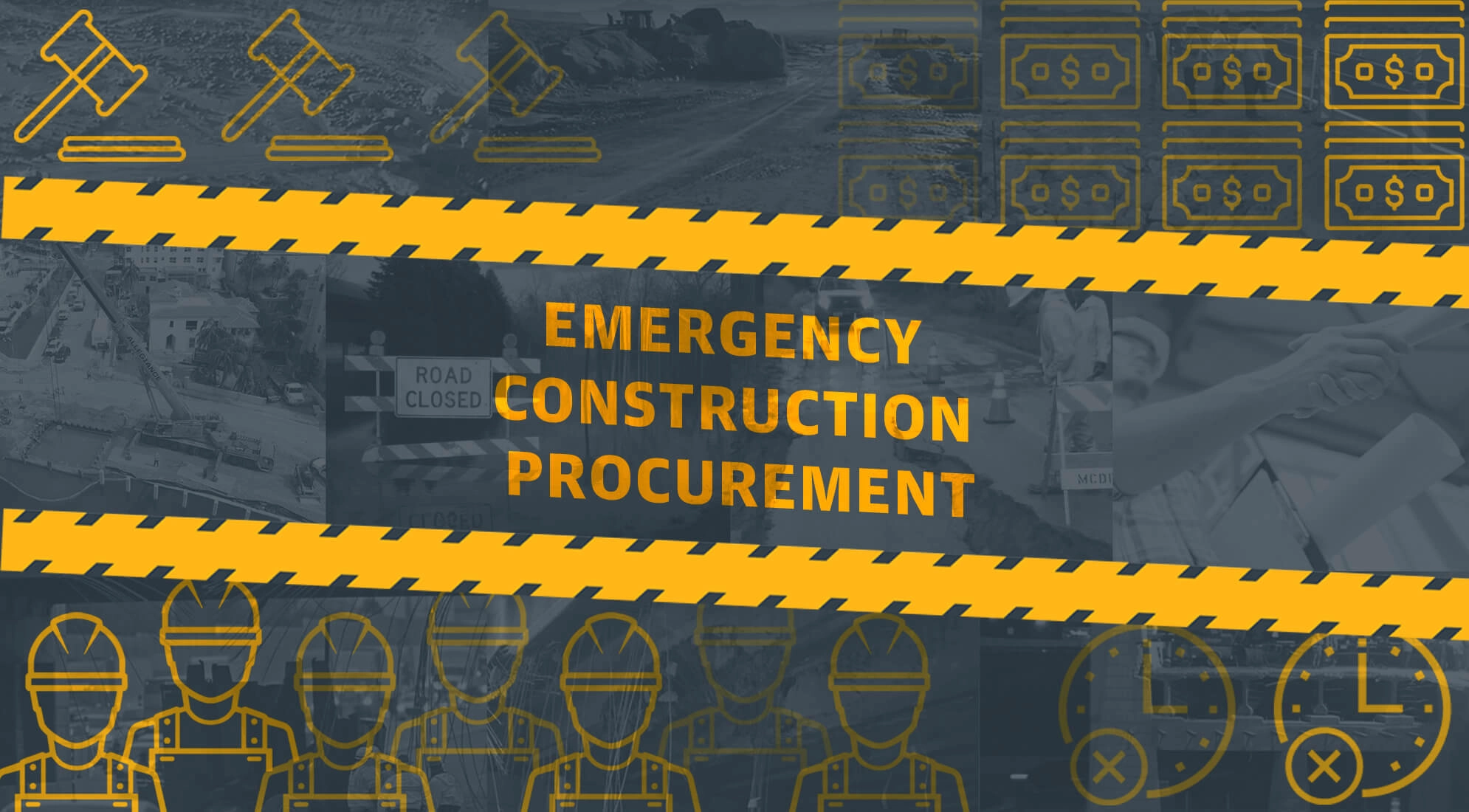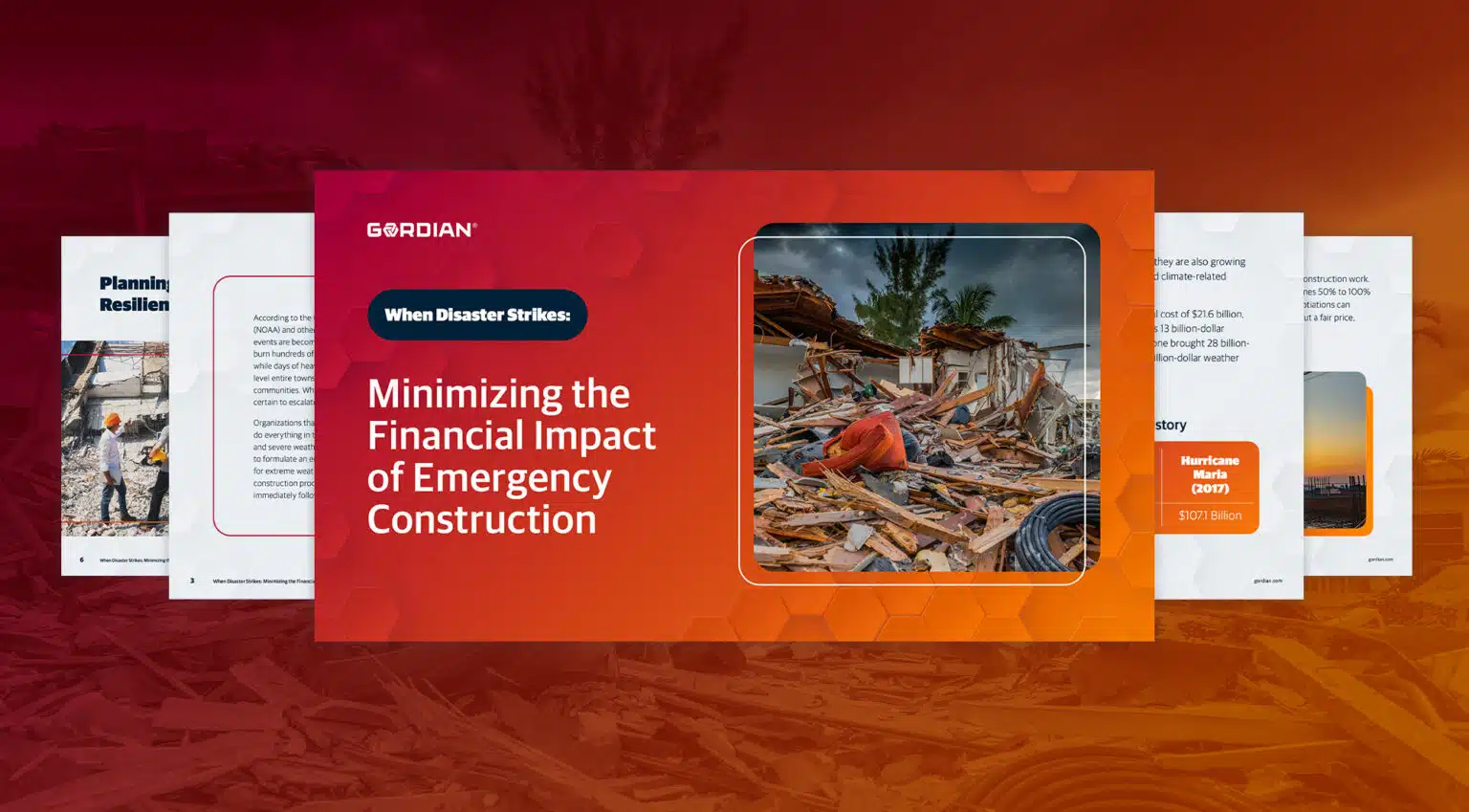Imagine, Create and Sustain Stronger, Resilient Communities
As a leader in state or local government, your mission is clear: creating thriving communities where your citizens can live, work and play safely. This vision encompasses a wide array of responsibilities, from ensuring peace and safety to maintaining transit systems for seamless commutes, to preserving parks that serve as natural sanctuaries for all to enjoy.
This commitment to building and maintaining robust, life-enhancing infrastructure is no easy task – but you are not alone. Gordian is here to help with insights, technology and expertise that help you deliver for your community.

Protect Your Office’s Reputation
Ensuring your processes are above board preserves public trust, prevents taxpayer funds from misappropriation and protects you and your colleagues from embarrassment and legal penalties. Gordian’s Job Order Contracting (JOC) is a construction project delivery method that prioritizes compliance as much as it does efficiency.
35% of contractors
involved in Gordian Job Order Contracting programs hold a minority business certification
Building the Future: What Public Sector Leaders Say About Using State and Federal Aid
Gordian partnered with GovExec to survey over 200 public sector leaders to capture their challenges using state and federal aid for construction projects. This playbook presents the survey findings and provides actionable takeaways for interested stakeholders.
Trusted by Government Agencies Nationwide to Deliver on the Promise of Better Communities. Click on a Tile to Learn More.

Secure Funding and Allocate It to the Right Places
Your most consequential decisions revolve around deploying capital. Yet communicating needs and creating consensus with those who don’t speak the language of facilities is difficult and stressful. Gordian’s Assessments and Capital Planning solutions help you gather the data you need and share it in a way that everyone understands.
Jorge Orol | Renovation Services Section Manager, Miami-Dade County
“[Gordian] provides facilities assessments by experienced professionals that will give us an objective baseline to evaluate and software that will help us maintain complete and accurate data in the years to come.”
75+ state and local government agencies
rely on Gordian’s Assessments and Capital Planning Solutions to identify risks, generate strategies and communicate needs

Deliver Projects That Make a Real Difference in People’s Lives
Public construction projects have a tangible impact on the community experience. That’s the powerful thing about government work: It matters. Gordian’s Job Order Contracting assists you in accelerating the work that matters most while acting as a responsible steward of taxpayer funds.
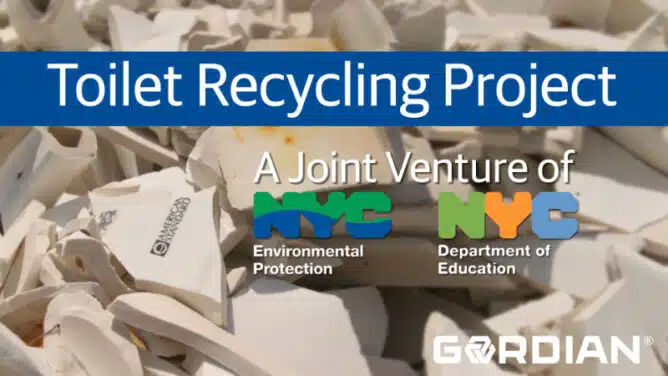
Daniel T. Prentice | Deputy County Administrator, Dorchester County (SC)
“Dorchester County has been steadily advancing its facilities master plan and related strategic plan goals since 2019. This project is really bringing us full circle.”
See how Dorchester County leaders are impacting their community
In the past five years,
$1.6 billion in construction volume
was completed through state-level Gordian JOC programs
Supercharge Disaster Preparation, Response and Recovery
Extreme weather events are becoming more common, and as a community leader, you are in a position to prepare for natural disasters and to create mechanisms for effective response and recovery efforts. Here’s how we can help.
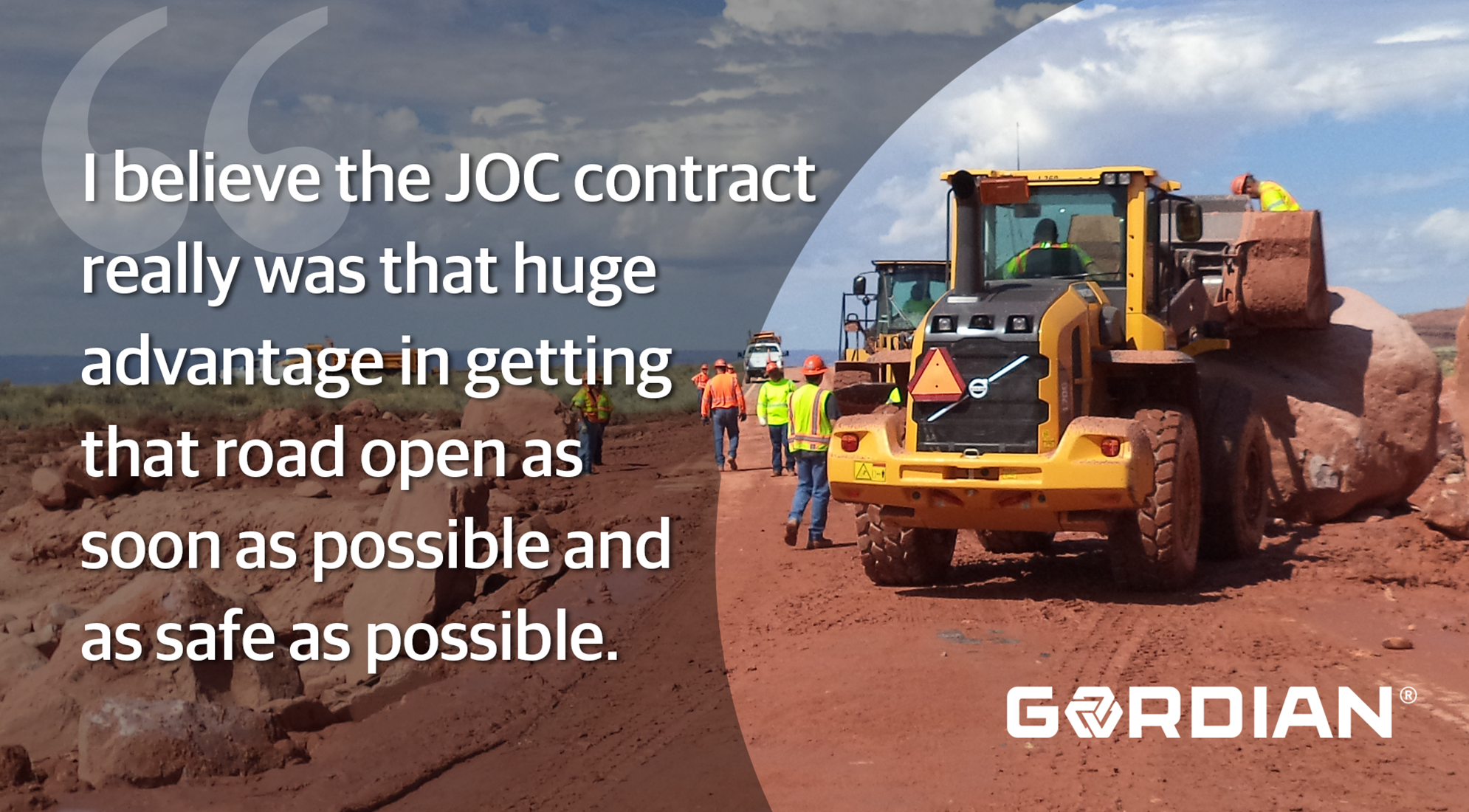
Gordian’s Building Intelligence™ Solutions empower the public sector to budget, build and maintain their capital-intensive physical assets. See how we can help you make better decisions, run better projects and deliver better outcomes for your community.
Gordian’s Facilities Planning Solutions
Gordian’s Construction Procurement Solutions
Gordian’s Asset Optimization Solutions



